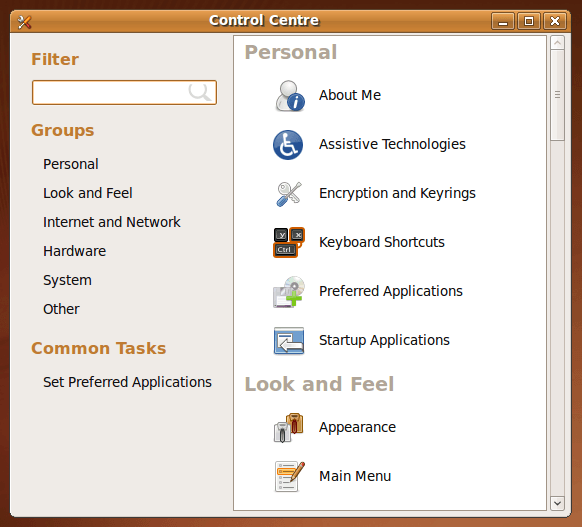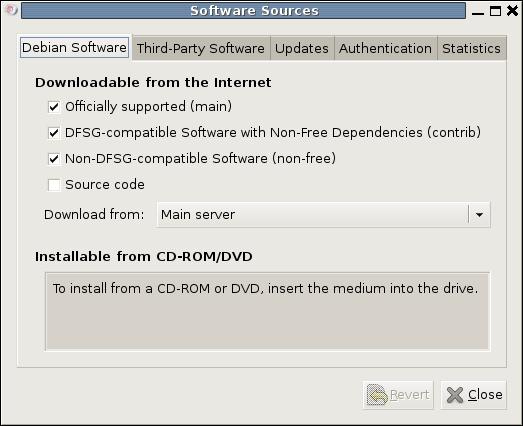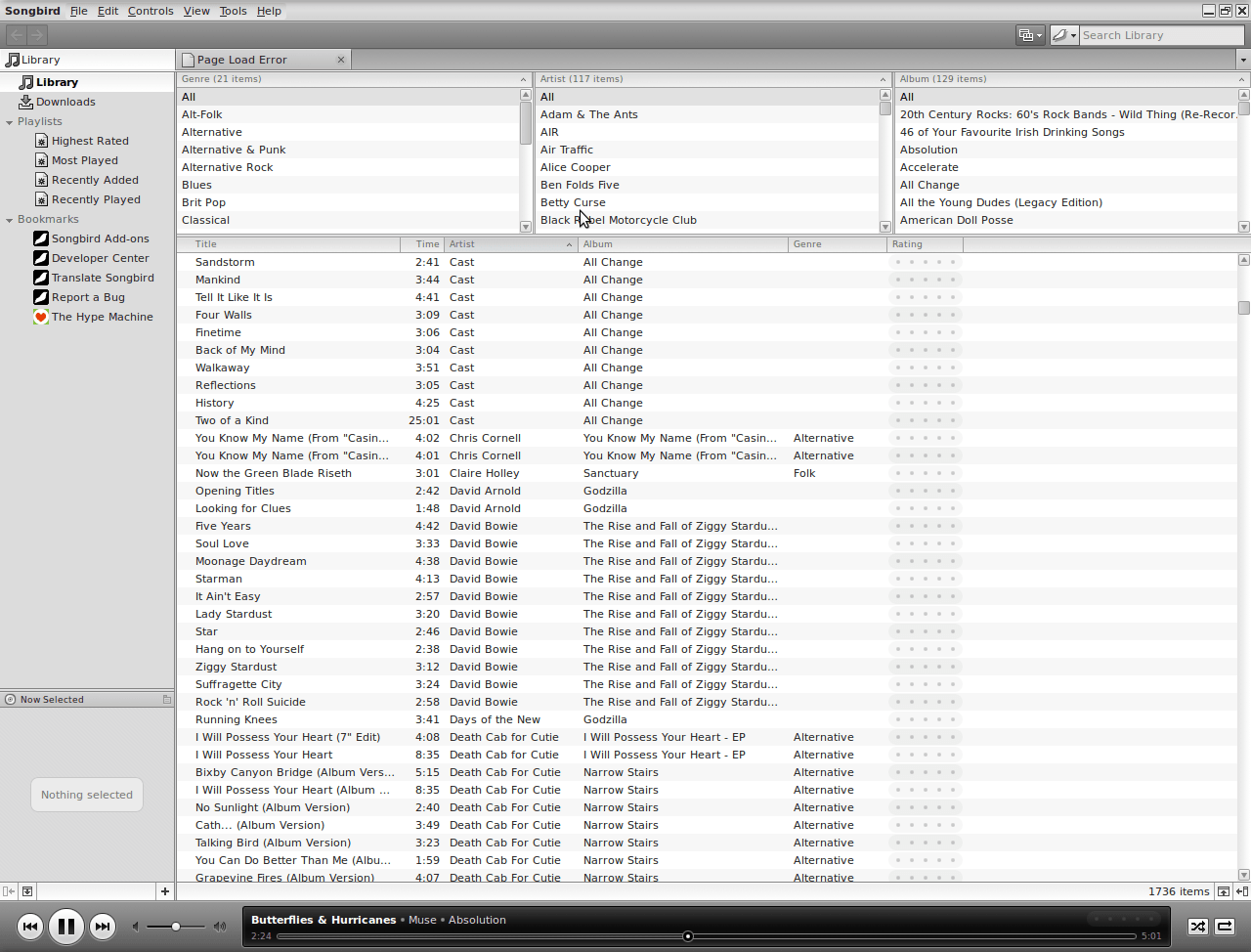TOPIC: FIREFOX
Testing a Firefox performance fix
9th October 2009Recently, I have been having problems with Firefox being sluggish, so I resorted to a Lifehacker tip to see if that helped. It was a matter of opening up the Error Console from the Tools menu and entering the following long line into the command bar and hitting the evaluate button:
Components.classes["@mozilla.org/browser/nav-history-service;1"].getService(Components.interfaces.nsPIPlacesDatabase).DBConnection.executeSimpleSQL("VACUUM");
It did the track once or twice, but its database hoovering claims are on trial as far as I am concerned. Keeping an eye on what's eating system resources will be on the menu too, especially after seeing what my brief foray with Ubuntu One was doing. A move to Google Chrome cannot be ruled out of the question, either.
Early impressions of Ubuntu 9.10
5th August 2009Even if the twice a year release means that changes to Ubuntu are evolutionary rather than revolutionary, that isn't to imply that curiosity doesn't get the better of me from time to time. The result is that an early alpha version (3 at the time of writing) of the Linux distro has found a home in a VirtualBox VM on my main system. The most noticeable change so far is the inclusion of GNOME 2.27.5 with its Fedora-esque log-in screen and the movement of the shutdown and log-off paraphernalia to the System menu, which is where you find it in Debian or Fedora. On the account settings menu, there lives a link to an equivalent of the Windows Control Panel called Control Centre; the menu item is named System Preferences. For the record, I have seen it in Fedora 11 too, so it does look as if Ubuntu's GNOME implementation is looking more like a brown equivalent of Fedora. Whether this stays like this is anyone's guess, but a new messaging arrangement is coming into being, too.

Otherwise, there appears to be no real drama on the surface, with Firefox staying at 3.0.x for now and OpenOffice moving to 3.1. Personally speaking, I'd be very surprised to see Firefox 3.5.x being left out, though I did run into a spot of bother with the Preferences dialogue crashing it on Windows XP. Under the bonnet, the kernel is at release 2.6.31 and things seem reasonably stable at this stage. Saying that, there is a crash report icon that appears every session, but that has no effect apart from the visual side of things. VirtualBox Guest Additions work as they should, better than they in Windows guests if my experience provides any sort of benchmark (the display does odd things unless you keep jogging the graphics memory up and down). All in all, things appear usable if undramatic at this stage, and there are a few months to go before the final release anyway.
Adding Microsoft core fonts to Debian
18th June 2009When setting up Ubuntu, I usually add in Microsoft's core fonts by installing the msttcorefonts package using either Synaptic or apt-get. Though I am not sure why I didn't try doing the same thing for Debian until now, it's equally feasible. Just pop over to System > Administration > Software Sources and ensure that the check-boxes for the contrib and non-free categories are checked like you see below.

You could also achieve the same end by editing /etc/apt/sources.list and adding the non-free and contrib keywords to make lines look like these before issuing the command apt-get update as root:
deb http://ftp.debian.org/debian/ lenny main non-free contrib
deb-src http://ftp.debian.org/debian/ lenny main non-free contrib
All that you are doing with the manual editing route is performing the same operations that the more friendly front end would do for you anyway. After that, it's a case of going with the installation method of your choice and restarting Firefox or IceWeasel to see the results.
Ridding the Google Toolbar dictionary of erroneously added words
16th June 2009Butterfingeredness can happen to anyone, and it's always nice to know to remove words added to custom dictionaries in error. Many of my blog postings have had their spellings checked using a button on the Google Toolbar, so I have a vested interest in knowing how to remove any bloomers. Thankfully, they have a useful page telling you exactly what you need to do for Firefox and Internet Explorer. As is often said, you can never be too careful...
A late "advance" sighting?
6th June 2009Somewhat infuriatingly, Google released its own browser, Chrome, into the wild near the end of last year, though only for Windows. My experiences with it on that platform are that it works smoothly, albeit without many of the bells and whistles that can be got for Firefox. While an unofficial partial port was achieved using Crossover Chromium and there is the Chromium project with all its warnings and the possibility to add a repository for its wares to Ubuntu's software sources, we have been tantalised rather than served so far. However, that was recently bettered by the release of early access versions. In reality, these can be said to be alpha versions so not everything works, but it's still Chrome and without the need for Windows or WINE. The rendering engine, most importantly, seems to be the equal of what you get on Windows, while ancillary functions like bookmark handling seem incomplete. In summary, the currently available deb packages are a work in progress, yet that's better than not having anything at all.
Navigating plugin compatibility issues on 64-Bit Ubuntu 9.04
26th May 2009My laptop has both Windows Vista and Ubuntu on there, with WUBI being the facilitator of the peaceful coexistence. However, what I either forgot or never realised was that it was the 64-bit variant of Ubuntu 9.04 that has found its way onto the thing. For the most part, it works well, but there is one catch that I recently encountered: not every Firefox plugin or add-on is 64-bit compatible.
Google Gears is one such example, yet other very useful and pervasive helpers have the same affliction: RealPlayer is one, and Adobe's Flash is another. Apparently, you can still download the 32-bit release versions and use nspluginwrapper to get them going. That worked for RealPlayer, but seemingly not for Flash; more investigation may be needed on that one.
Other remedies like using 32-bit Firefox (if it runs, of course) or alpha versions of what Adobe offers can be tried too. It almost goes without saying that I'd wish that there was more awareness of the 64-bit Linux world, but I remain glad to have met this rough edge before taking the plunge with my main system.
Update 2014-01-24: It looks as if this problem has gone away now with the growth in maturity of 64-bit computing. Certainly, it does not rear its head on any 64-bit Linux distro that I have used or even Windows, apart perhaps from ensuring that you are using the right JRE for a browser (32-bit or 64-bit).
Self-hosted web analytics tracking
24th April 2009It amazes me now to think how little tracking I used to do on my various web "experiments" only a few short years ago. However, there was a time when a mere web counter, perhaps displayed on web pages themselves, was enough to yield some level of satisfaction, or dissatisfaction in many a case. Things have come a long way since then, and we now seem to have analytics packages all around us. In fact, we don't even have to dig into our pockets to get our hands on the means to peruse this sort of information, either.
At this point, I need to admit that I am known to make use of a few simultaneously but thoughts about reducing their number are coming to mind, but there'll be more on that later. Given that this site is hosted using WordPress software, it should come as no surprise that Automattic's own plugin has been set into action to see how things are going. The main focus is on the total number of visits by day, week and month, with a breakdown showing what pages are doing well, together with an indication of how people came to the site and what links they followed while there. Don't go expecting details of your visitors like the software that they are using and the country where they are accessing the site with this minimalist option and satisfaction should head your way.
There is next to no way of discussing the subject of website analytics without mentioning Google's comprehensive offering in the area. You have to admit that it's comprehensive, with perhaps the only bugbear being the lack of live tracking. That need has been addressed very effectively by Woopra, even if its WordPress plugin will not work with IE6. Otherwise, you need the desktop application (being written in Java, it's a cross-platform affair and I have had it going in both Windows and Linux) but that works well too. Apart maybe from the lack of campaigns, Woopra supplies as good as all the information that its main competitor provides. It certainly does what I would need from it.
However, while they can be free as in beer, there are some costs associated with using external services like Google Analytics and Woopra. Their means of tracking your web pages for you is by executing a piece of JavaScript that needs to be added to every page. If you have everything set to use a common header or footer page, that shouldn't be too laborious, especially when there are plugins for publishing platforms like WordPress too. This way of working means that if anyone has JavaScript disabled or decides not to enable JavaScript for the requisite hosts while using the NoScript extension with Firefox, then your numbers are scuppered. Saying that, the same concerns probably any JavaScript code that you may want to execute, but there's another cost again: the calls to external websites can, even with the best attention in the world, slow down the loading of your own pages. When you add in latency caused by servers having to communicate across the web, it is not all about executing JavaScript code.
A self-hosted analytics package would avoid the latter, and I found one recently through Lifehacker: Piwik, formerly known as PHPMyVisites. Usefully, it turns out that it does next to everything that Google Analytics does. While I'd prefer that it used PHP for this, JavaScript is its means of tracking web pages too. Nevertheless, page loading is still faster than with Google Analytics and/or Woopra and Firefox/NoScript users would only have to allow JavaScript for one site too. If you have had experience with installing PHP/MySQL-powered publishing platforms like WordPress, Textpattern and such like, then putting Piwik in place is no ordeal. Though, you may find yourself changing folder access, uploading of the required files, the specification of database credentials and adding an administration user is all fairly standard stuff. After all that, I have the thing tracking this edifice as well as my outdoor activities (hillwalking/cycling/photography) web presence and I cannot say that I have any complaints, so we'll see how it goes from here.
Trying out Songbird
2nd March 2009
It's remarkable what can be done with a code base: the Gecko core of Firefox has been morphed into a music player called Songbird. On my Ubuntu machine, Rhythmbox has been my audio player of choice, yet the newcomer could be set to replace it. There might have been other things going on my system, but Rhythmbox playback was becoming jumpy and that allowed me a free hand to look at an alternative.
A trip to the Ubuntu repositories using Synaptic was all that was required to get Songbird installed. I suspect that I could have gone for an independent installation, but the one that was available through the official channel sufficed for me. It found every piece of music in the relevant folder, even those that it was unable to play because of iTunes DRM, and it was easy to set it such that it simply moved on when it met such a file rather than issuing a dialogue box to complain. That means that I weed out the incompatible entries in the course of time, rather than having to do it straight away. I cannot claim to be an audiophile, but the quality of the playback seems more than acceptable to me and there seem to be no jumps so long as a file hasn't been corrupted in any way. All in all, Rhythmbox could get usurped.
position: static?
12th September 2008CSS positioning seems to be becoming a nightmare when it comes to IE6 support. While I am aware that the likes of 37signals have stopped making their products work with it, there remain plenty of people who stick or are stuck with the old retainer. I am one of the latter because of the continued use of Windows 2000 at my place of work, though a Windows Vista roll-out has been mooted for a while now. If nothing else, it keeps me in the loop for any inconsistencies that afflict the display of my websites. Positioning of an element within the browser window rather than within its parent element is one of these, and it looks as if specifying a position of relative in a stylesheet is part of this. Apparently, it could be down to its non-triggering of IE's haslayout property. Though it might be a hack, I have found that static positioning has helped. While I'll continue to keep my eye out for a better solution if it exists, the static option seems to have no detrimental effect in IE7, IE8, Firefox, Safari, Chrome or Opera.
Early impressions of Ubuntu 8.10 in its alpha stage
20th July 2008Here is an admission: my curiosity got the better of me when screenshots of Ubuntu's 8.10, otherwise known as Intrepid Ibex, started to make their appearance. Since it is only at alpha2 stage, it's definitely a no-no for production systems. However, it does run surprisingly smoothly even at this stage. Yes, I have seen rough edges and the biggest of them all has made me install it onto my spare PC; there is certainly a tendency for systems to hang when you try running 8.10 in virtual machines, my preferred method for these kinds of explorations. Try it in VirtualBox and kernel panic messages ensue while you can log in on VMware Workstation only for the desktop never to load. While those could be major deficiencies for some, they have both been reported, with the former being seen by many and the latter being flagged by my own self.
Mu use of a version with the alternate installer meant that the usual slickness that we expect of Ubuntu installations was not apparent. Though I am sure that will change in time for the final release, I did not find it too taxing to get things going with this means. Despite current changes, I expect a more familiar interface will return during later development cycles, certainly well before the final version is released. Because I was installing over the top of a previous Ubuntu installation, I didn't want to lose everything, but I needed to leave it to wipe out the previous root system partition for it to continue without freezing. Since my home directory resides on a separate partition, the transition occurred smoothly, with settings like desktop backgrounds being automatically detected without any complications. One thing that might annoy some is that all this takes manual intervention; you don't get the sort of non-destructive and seamless upgrade capability that openSUSE 11 gives.
What you get when the installation is completed is a Linux desktop that won't look too different from what we are used to using. The update introduces the New Human theme, featuring elegant chocolate-coloured elements that replace the previous default orange-brown colour scheme. They need to sort out a bug (another of my reports) where black text is being displayed on dark backgrounds on the default display of dropdown menus in Firefox and maybe look into why changing the level of enhancements from Compiz Fusion messes up the display of the workspace switcher in the task bar, but it's fine apart from this.
Otherwise, it's a case of steady as she goes with OpenOffice 2.4, Firefox 3 and so on. That may change as time goes on, with OpenOffice 3 looming on the horizon. For some, all this continuity is all well and good, but I could foresee comments front some parts that nothing dramatic is happening, and that Ubuntu cannot afford to stand still with the advances of Fedora, openSUSE, Mandriva and so on. Saying that, I like the continuity because it doesn't mean that my apple cart is going to get overthrown now and again. Indeed, you could say that the whole Linux distribution market has matured very nicely with evolution being the order of the day and I suppose that Ubuntu needs to be seen to be evolving more than perhaps it has been doing.
In summary, it's early days for Intrepid Ibex, yet it works well even at this stage. In fact, it is running sufficiently so that I am writing this very post in a Firefox session running on the thing. It will be interesting to see how it goes from here and if any more pleasant surprises are visited upon us. After the "safety first" approach of Hardy Heron, I suppose that Canonical can feel a little more adventurous, so we'll see what comes. Meanwhile, Here are a few screenshots below for your perusal: